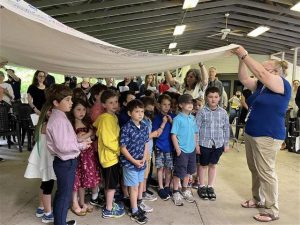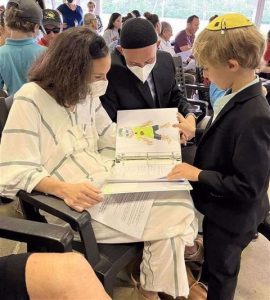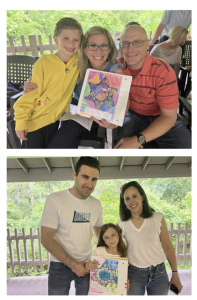When you recite Mah Tovu, the Barechu or even the Shema, what do you think about? Do you say the words without really knowing their intention? If so, you likely have much in common with the person sitting next to you in services.
At Mirowitz, your children learn how to pray with intention, and by first grade, they know what most prayers mean.
 When they sing Mi Chamocha, they think about freedom and the responsibilities of being free.
When they sing Mi Chamocha, they think about freedom and the responsibilities of being free.
When they say the Mah Tovu, they think about ways they can turn around the unkind words on their own lips and make them into a blessing, just as Balaam did in the Torah (Numbers 24).
They chant the Avot V’Imahot and know that each person has a special relationship with God, just as our ancestors did thousands of years go. 
This week, first graders celebrated the completion of their siddurim (prayerbooks), and an eight month study of prayer…and their joy was magnified by the presence of their parents at a special Siddur Ceremony in the pavilion.
Each siddur includes stunning illustrations that not only reflect creativity and imagination, but also will serve as a visual image of the meaning behind each prayer, an image that will be forever implanted in their minds as they pray in any synagogue, in any city, in any country. Neuroscientific research shows that the act of creating, constructing and illustrating helps build meaning and long-term memory. Mirowitz students’ siddurim will be an integral part of their childhood and the education will last a lifetime.
Shabbat Shalom,
Morah Cheryl
